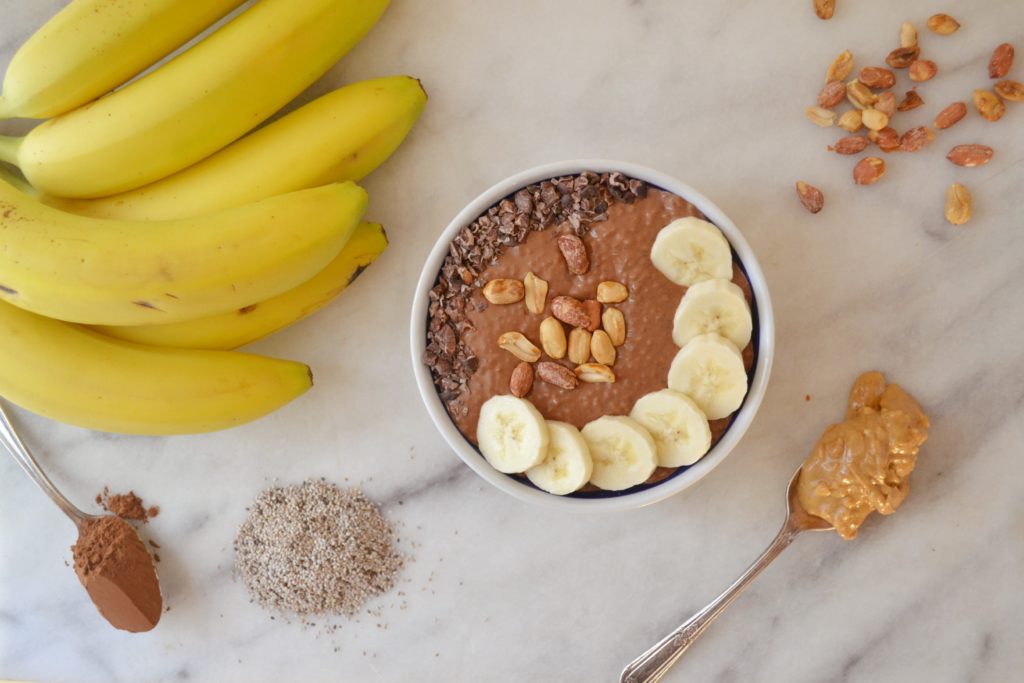The miracle seed, chia—a seed with a long history as an important part of the ancient Aztec, Mayan and Inca civilizations—is blowing up in popularity. It is a nutritional, health and beauty powerhouse that can be used to make smoothies, omelets, pudding and other delectable treats. In this article, I lay out the basics of chia and give you some great recipes to try out.
Chia seeds are a small, nutrient-dense seed that has been used in Central American and Maya cultures for centuries. It is high in omega-3 fatty acids, antioxidants, and fiber. Chia seeds are used in several types of foods, including beverages, cereals, and breads. They are also used as animal feed and human supplements.
Chia seeds are renowned for their health benefits, but they also make a delicious addition to desserts and savory dishes.
A Quick Look
Chia is a plant native to Mexico and Guatemala that was a significant component of the Mayan and Aztec diets hundreds of years ago. Chia experienced a short resurgence in popularity in the Western world in the 1980s, but only as a decorative plant sprouting from clay figurines known as “Chia Pets,” rather than as a source of nourishment. Chia is back in style, and for good reason: it’s high in fiber, plant-based omega 3 fatty acids, and a variety of minerals including phosphorus, manganese, magnesium, calcium, and iron. Chia is simple to consume and can be added to practically anything owing to its neutral taste. Chia will absorb liquid and develop into a tapioca pudding-like gel if allowed to sit in a wet medium, which may be nasty or delicious depending on the recipe and your texture preferences.
Overview
Chia, a small mint seed, has seen numerous popularity “booms.”
The first occurred before the arrival of the Spanish. Chia, a Mexican and Guatemalan native, was a staple meal in Aztec and Mayan diets, rivaling maize as a source of nourishment. Chia was a valued crop because it was nutritionally rich, had a long storage life, and was ideal for travel; it provided energy and stamina to both warriors and long-distance runners.
The popularity of the sprout-before-your-eyes Chia Pet fueled the second boom in the 1980s. You couldn’t turn on the TV for a while without hearing, “Ch-ch-ch-chia!” There isn’t much else to say about the subject.
The popularity of chia seeds has reached its third high. This trend has been increasing over the last decade, and although chia seeds were formerly exclusively available in specialized health food shops, they are now widely available in most grocery stores, and can be found in energy drinks, granola bars, cereals, bread, and crackers.
Chia is well-liked for a reason. Chia seeds are rich in fiber and omega-3 fats, and they’re simple to prepare and consume. Although chia seeds may be used in a variety of dishes, it is probably best known for its usage in chia puddings. Chia seeds can retain 10 times their weight in water, and when combined with liquid, they rapidly expand and gel to form a delicious dish with a tapioca pudding feel. These puddings provide a delicious and filling breakfast when topped with fruit or nuts.
Identification
Chia seeds are oval-shaped and have a diameter of less than a millimeter. They are available in “white” or “black” variants. In actuality, “white” chia seeds are a light grey color, whereas “black” chia seeds are a marbled, dark grey color. These two variants have no discernible taste or nutritional differences.
If you can break open a small seed with your fingers, you’ll find a pale, fat-rich flesh with a pleasant, nutty taste comparable to flax seeds. Chia has a taste that is almost unnoticeable when it is incorporated into meals. Chia seeds, on the other hand, will change texture as they absorb moisture from the environment and expand into gel-like balls, significantly thickening whatever liquid they were put to.
Nutritional Information
138 calories, 4.7 grams of protein, 8.7 grams of fat, 11.9 grams of carbs, 9.8 grams of fiber, and no sugar in two tablespoons of chia (about 28 grams or one ounce). Chia is a rich provider of calcium and iron, as well as a great supplier of phosphorus, manganese, and magnesium.
Chia seeds, as previously stated, are high in plant-based omega 3s, with approximately 2.5g of omega 3s per tablespoon.
Selection
When buying chia, look for a reputable food store with a large product turnover. If you’re going to a bulk food store, look for one with covered containers.
Choose light grey or dark grey chia seeds, and keep in mind that speckling and non-uniform coloration are to be expected. Avoid seeds that are brown, since this indicates immaturity; these seeds will have less nutritious content and will taste more bitter than their mature counterparts.
Chia will smell and taste sweet and nutty if it is of good quality. Bitterness indicates that the seeds are either immature or rotten. Despite the availability of powdered chia seeds, whole chia seeds have a longer shelf life and are less prone to become rancid on the shelves.
If you’re purchasing chia seeds in a package, be sure to read the label. There should be no additional components in chia seeds, whether crushed or whole.
It’s also worth noting that just because chia is now a common component in many meals doesn’t imply the product is healthful. Read the ingredients and nutritional labels on everything you purchase to ensure the product matches your own personal quality standards.
Storage
Whole chia seeds, like other nuts and seeds with a high fat content, store best in a sealed container in the fridge or freezer for six months to a year. If you intend to eat them within a few months, keep them in a cold, dark, and dry cabinet.
Preparation
Chia seeds, unlike flax seeds, do not need to be ground in order to digest and extract their nutrients.
Chia seeds may be sprinkled over salads, soups, or porridges without any additional preparation and will maintain a nice crunchiness if not left to rest for too long. They may also be added to smoothies to enhance nutrition and add thickness and texture, or allowed to gel and used in baked products as an egg substitute.
Chia may be made into a pudding, which is perhaps the most delightful way to consume it. Here’s how it’s done:
Stir together one part chia with four to five parts liquid (you may use normal milk, nut milk, or juice), and let aside for at least 20 minutes. Allow it to sit for a couple of hours if possible (or overnight). Shorter sitting periods result in a “looser,” grainier pudding, while longer sitting times enable the seed to fully absorb liquid, resulting in a thick, tapioca pudding texture.
Yogurt, fruit, nuts, granola, and/or protein powder may be added to this pudding. The options are limitless! Use your imagination!
CHIA BREAKFAST PUDDING WITH CHOCOLATE PEANUT BUTTER

Chia seeds, which are high in fiber and omega-3 fatty acids, absorb liquid and expand to provide a luscious pudding texture. This breakfast tastes like dessert because of the irresistible flavor combination of chocolate and peanut butter.
Ingredients
milk made from almonds 1 cup cocoa powder, unsweetened 2 tbsp peanut butter (natural) 2 tbsp maple syrup or honey 1 teaspoon vanilla extract 1 teaspoon salt a sprinkle of whole chia seeds 3 tbsp banana slices, peanuts, and cocoa nibs
Directions
Time to prepare: 5 minutes Time to cook: 0 minutes Serving Size: 1
In a blender, combine the milk, cocoa powder, peanut butter, maple syrup, vanilla, and salt until a smooth liquid is produced.
Pour the liquid into a container, then add the chia seeds. Allow for 15 minutes before whisking again. Allow three hours or overnight in the fridge after covering the jar.
The chia pudding is ready to eat after it has set.
If wanted, add toppings and enjoy!
Book of Free Recipes
Every month, the Encyclopedia of Food grows as we include new delicacies and stunning food photography. Simply click this link to keep up with the latest news. Following that, we’ll give you a complimentary copy of our recipe book. We’ll also notify you when we introduce new and tasty items to the site.
For a free copy of the Encyclopedia of Food recipe book, go here.
Foods That Are Related
The name of this blog is Chia. The word “chia” is a beautiful word, and means “life” in the Mayan language. The Chia lifestyle brings people together like no other, helping them to take control of their health and happiness.. Read more about chia seed recipes breakfast and let us know what you think.
Frequently Asked Questions
What is the best way to eat chia seeds?
The best way to eat chia seeds is by mixing them in a bowl of oatmeal or yogurt. You can also sprinkle them on top of salads, cereal, and granola.
Why is chia bad for you?
Chia seeds are a high-fiber, nutrient-dense food that is not only good for you but also has many health benefits. However, they can cause gas and bloating in some people.
What can make with chia?
Chia is a type of plant that can be used to make bread, pudding, and more.
Related Tags
This article broadly covered the following related topics:
- chia seeds benefits
- chia seeds
- benefits of chia seeds
- chia seeds health benefits
- what are chia seeds

